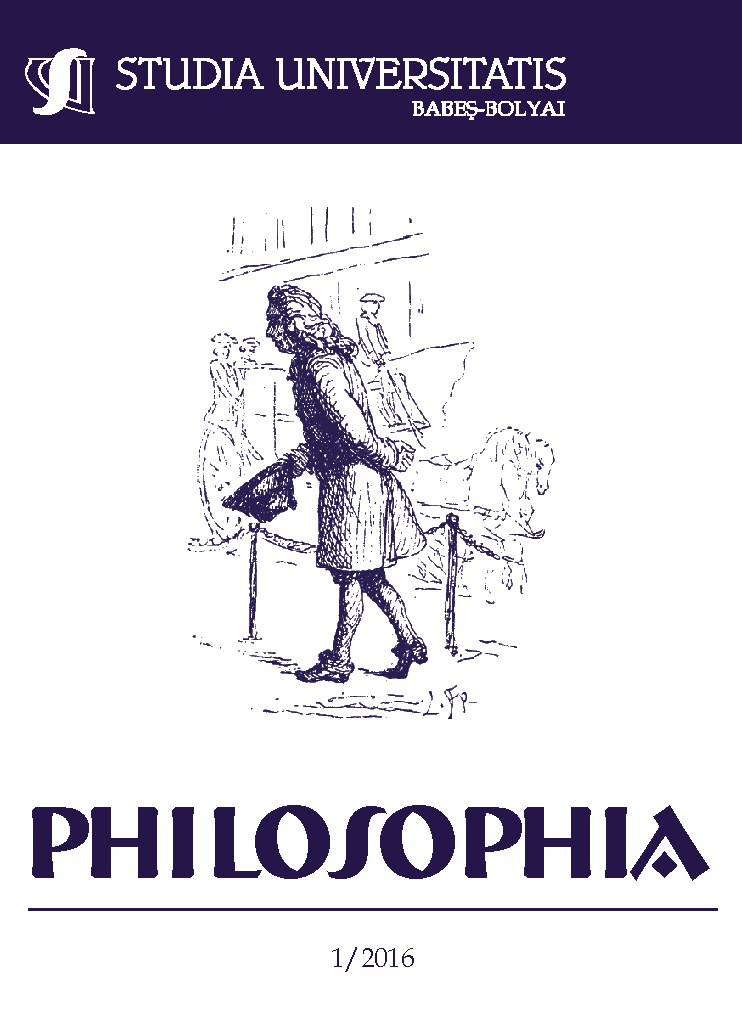INGMAR BERGMAN ET “L’HEURE DU LOUP“ – LE PASSAGE DU « LUMEN OPACATUM » AU CRI EXPRESSIONNISTE
Keywords:
expressionism, film, BergmanAbstract
Ingmar Bergman and the Hour of the Wolf – Shifting from “lumen opacatum” to the Expressionist Scream. In Wild Strawberries/Smultronstället (1957), but especially in Hour of the Wolf/Vargtimmen (1968), Ingmar Bergman resignifies the metaphorical heritage of the German Expressionism. The figure of the false death, the frightening image of the horologe without hands presented in a Gothic geometry, the reminiscences of the dead father, the intellectual in a frame of accumulated diagonals, the inexorable dying and the promised death are some extensive directions of this study. If the characters in these two films live in a morbid dimension of the “borrowed” time and their shadows emerge from a tenebrous world, an important principle remains the “non-organic life of things”, coupled with the process of “lyrical abstraction” (G. Deleuze). The German expressionist directors yearn nostalgically to relive the golden age by capturing melancholic landscapes. Therefore, Bergman’s expressionist techniques are transformed and combined with the surreal atmosphere or the stylized realism, a context in which the apocalyptic language of the painter Johan Borg (similar to that of August Strindberg in the poem The Wolves are Howling) reveals the ability of the expressionist spirit in amplifying and recombining his thoughts/thinking.
References
Agel, Henri, Métaphysique du cinéma, Paris: Payot, 1976.
Aumont, Jacques, Ingmar Bergman. « Mes films sont l’explication de mes images », Paris: Cahiers du cinéma, 2003.
Aumont, J., L’image, Paris: Nathan, 1990.
Bergman, Ingmar, Four Stories by Ingmar Bergman (“The Touch”, “Cries and Whispers,” “The Hour of the Wolf”, “The Passion of Anna”), New York: Doubleday, 1976, trans. Alan Blair.
Bergman, I., Images: My Life in Film, New York: Arcade Publishing, 2007, trans. from the Swedish by Marianne Ruuth, introd. by Woody Allen.
Bergman, I., Lanterna magică, București: Meridiane, 1994, trad. Dan Shafran, Elena Florea, Carmen Banciu.
Coates, Paul, The Gorgon’s Gaze. German Cinema, Expressionism and the Image of Horror, Cambridge Univ. Press, 1991.
Deleuze, Gilles, Cinéma 1. L’image-mouvement, Les Éditions de Minuit, 2006.
Deleuze, G., Cinéma 2. L’image-temps, Les Éditions de Minui, 1985.
Eisner, Lotte H., L’écran démoniaque. Les influences de Max Reinhardt et de l’expressionnisme, Le Terrain Vague, 1990.
Freud, Sigmund, Opere 7. Nevroză, psihoză, perversiune, București: Trei, trad. R. Melnicu, C. Irimia, R. Wilhelm, S. Dragomir, notes introd. R. Melnicu, 2002.
Hubner, Laura, The Films of Ingmar Bergman. Illusions of Light and Darkness, Palgrave Macmillan, 2007.
Kalin, Jesse, The Films of Ingmar Bergman, Cambridge Univ. Press, 2003.
Kracauer, Siegfried, From Caligari to Hitler. A Psychological History of the German Film, Princeton Univ. Press, ed. and introd. by Leonardo Quaresima, 2004.
Kurtz, Rudolf, Expressionismus und Film, Berlin: Verlag der Lichtbildbühne, 1926.
Macnab, Geoffrey, Ingmar Bergman. The Life and Films of the Last Great European Director, London: I. B. Tauris, 2009.
Marzynski, Georg, Die Methode des Expressionismus, Leipzig: Verlag KlinKhardt und Biermann, 1921.
Metz, Christian, Essais sur la signification au cinéma, Paris: ed. Klincksieck, 1983 (Tome I) – 1986 (Tome II).
Stoichiță, Victor Ieronim, Creatorul și umbra lui, București: Humanitas, 2007, seconde éd.
Stoichiță, V. I., Scurtă istorie a umbrei, București: Humanitas, trad. Delia Răzdolescu, 2008.
Strindberg, August, Selected Essays, Cambridge Univ. Press, select., ed. and trans. Michael Robinson, 2006.
Selected Poems of August Strindberg, ed. and transl. by Lotta M. Löfgren, Southern Illinois Univ. Press, 2002.
Strindberg, A., Singur, Polirom, trad. et préf. par Gabriela Melinescu, 2002.
Worringer, Wilhelm, Abstracție și intropatie, éd. Univers, 1970.
Éd. collective
***Teatru expresionist german, 1974. București: Univers, sélect., préf. et table chronol. Ileana Berlogea, trad. Dieter Fuhrmann, Ion Roman, Liviu Ciulei.
Webographie
Project Gutenberg Ebook: Strindberg, The Road to Damascus (I, II, III).
Downloads
Published
How to Cite
Issue
Section
License
Copyright (c) 2016 Studia Universitatis Babeș-Bolyai Philosophia

This work is licensed under a Creative Commons Attribution-NonCommercial-NoDerivatives 4.0 International License.





